The Monk's Way - Lenton
Priory
This page
was added to the site on 01 February 2004
One only has to glance at a map of this part of Lenton
and see names such as Abbey Street, Abbey Bridge, Cloister Street,
Priory Street, Old Church Street, Friary Close, Friar Street
and The Friary to realise that this is an area of some historical
religious significance.
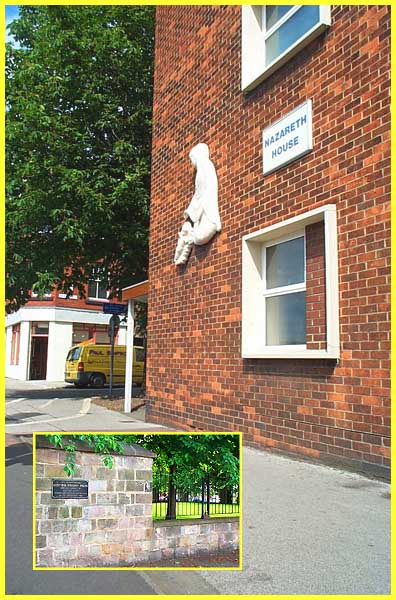
Even today, the presence of a branch of the Nazareth
House organisation on the corner of Priory Street is another
constant reminder of the area's continuing community caring.
Traffic though, speeds by here on its way to and from Nottingham
city centre with barely a glance and few passers by will be aware
of the history and former glory that once graced the streets.
At a busy cross roads just a few yards away, a small plaque on
a stone wall proclaims "Lenton Priory Park".
|

Once within the walls of the park, the speeding traffic
could be a million miles away and it is though we had stepped
back in time with a church appearing, seemingly tucked away between
the trees. This is the Priory Church of St Anthony and a notice
board gives a concise potted history as follows:
"This church was founded during the second half of the
12th century (about 1170) as the chapel of St Anthony's hospital
which stood in the courtyard of the great Lenton Priory. The
hospital was established by the monks for the care and cure of
the sick poor, particularly those suffering from "St Anthony's
fire", a distressing skin disease, similar to erysipelas,
an epidemic of which swept the country at that time.
This little church was built for their exclusive use."
|
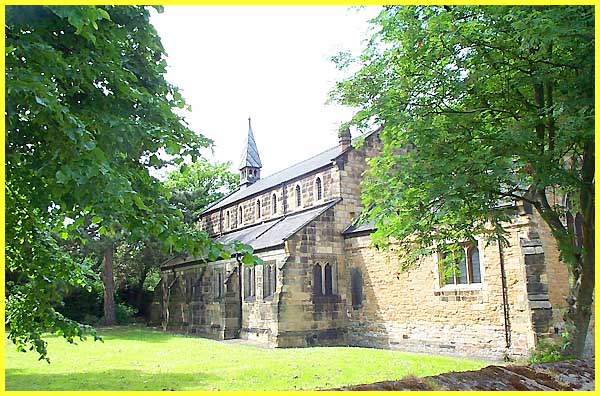
The information board about the church continues:
"When King Henry VIII dissolved the Priory in 1538 the villagers
transferred their parish altar, dedicated to the Holy Trinity,
from the Priory Nave into this small church. The church then
became known as "Holy Trinity Church". The building
remained the parish church until 1842, when the present fine
parish church was built on Church Street midway between Old Lenton
and New Lenton. The title and parochial status was transferred
to the new building. The roof of the nave of this old church
was removed and the chancel was converted into a mortuary chapel.
Following an increase in population in the 1880's it was decided
to restore the nave and bring this "Mother" church
back into use. As the title of Holy Trinity had been transferred
to the new Parish Church, this church reverted to its original
dedication of St Anthony.
St Anthony founded monasticism in the deserts of northern Egypt.
He lived from 251 to 356 A.D., dying at the age of 105."
|
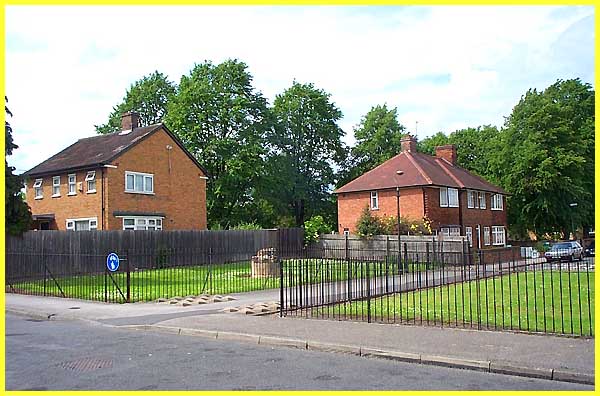
Very little of the Lenton Priory remains today but
where Old Church Street meets Priory Street (running left to
right in this image) an area of grass has been fenced off. This
was the site of the priory and there is an excellent article
detailing the history and also including a site map at The Lenton Listener.
|
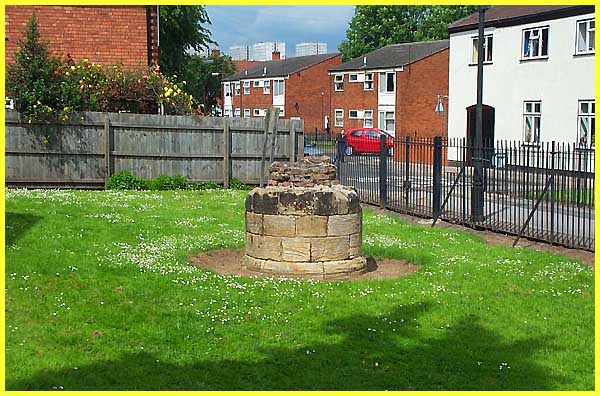
A closer look at the grassed area reveals the remnant
of a stone column which contrasts sharply with the surrounding
buildings and even more so with the high rise blocks in the distance
in the centre of Nottingham. Many of the properties in this area
now house students attending the Nottingham University or the Queens Medical
Centre, the first purpose-built teaching hospital in the UK,
both of which are nearby. I find a strange irony in the fact
that there is still a hospital here after all these centuries
since the one founded by the monks.
|
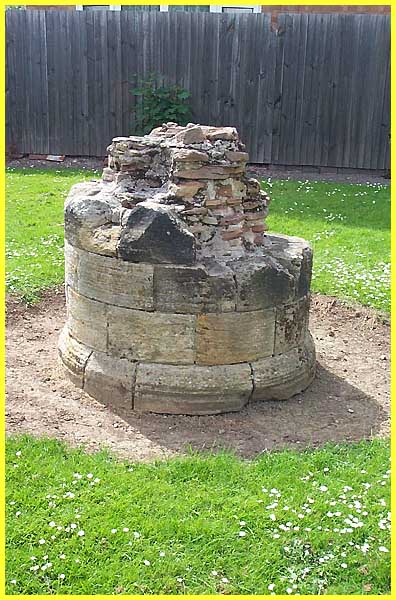
But this is all that remains of what was once one
of the greatest and most important religious houses in the Midlands
- the base of a Norman column. The Nottinghamshire History and Archaeology web
site gives a little more information about Lenton Priory and
is a good background to our exploration of the Monk's Way which
will continue with a look at Beauvale Priory.
|